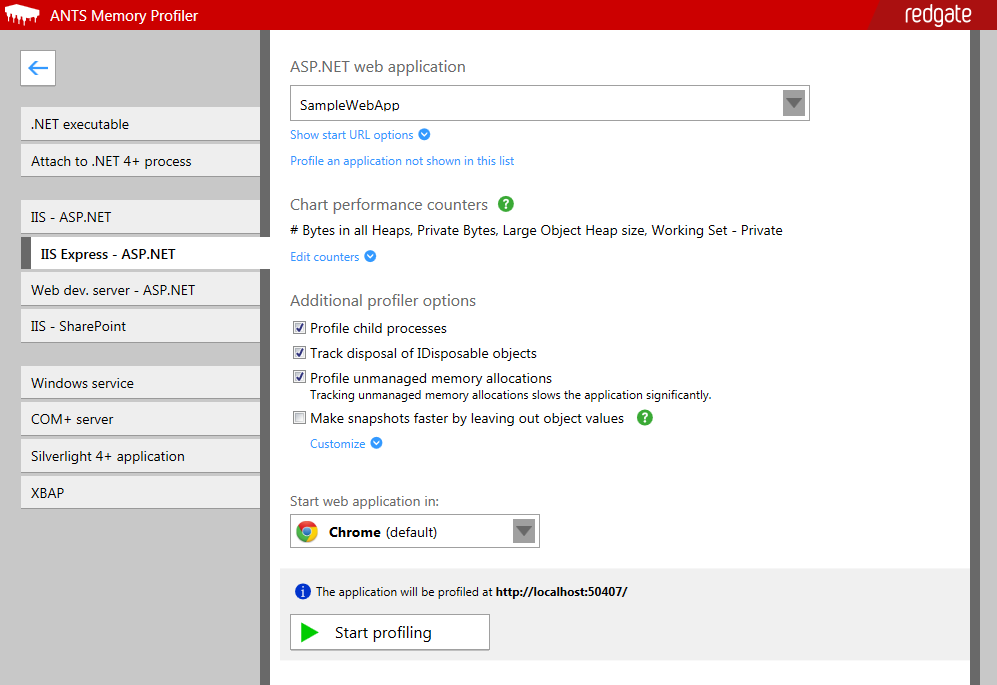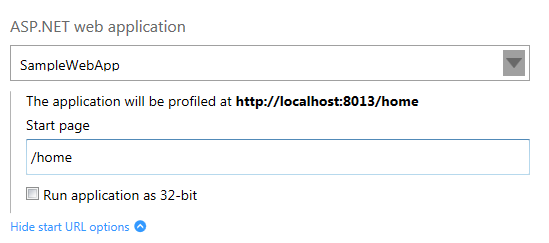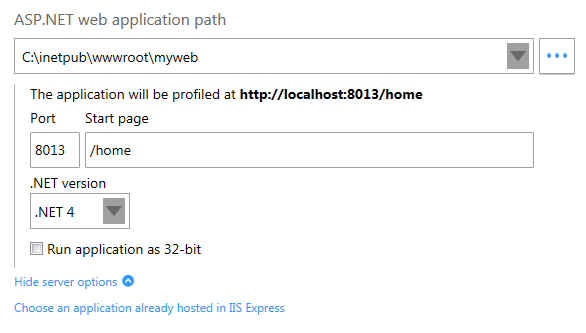Profiling an ASP.NET application on IIS Express
Published 14 May 2018
To profile ASP.NET applications running on IIS Express:
- Start ANTS Memory Profiler and click
- From the list of application types, select IIS Express - ASP.NET.
Select the ASP.NET web application you want to profile from the drop-down list.
If your application isn't in the list, go to step 4.If you want to specify a start page, or run your application as 32-bit, click Show start URL options:
- If the application you want to profile isn't in the drop-down list, click Profile an application not shown in this list and enter the path of your web application.
To specify a port or start page, or run your application as 32-bit, click Show server options:
If your application doesn't run on .NET 4, select .NET 2 from the .NET version drop-down list. - If you want to record extra performance counters, click Edit counters and select the counters you want.
Move your mouse pointer over a performance counter to read more about it.
For more information about performance counters, see Setting up performance counters. - Under Additional profiler options:
- Select Profile child processes to include any processes created by your application in profiling.
If your application has lots of child processes, this option will slow down your application. - Select Track disposal of IDisposable objects to keep track of when IDisposable objects in your application are disposed.
This option will slow down your application slightly. Select Profile unmanaged memory allocations if your application access unmanaged memory through P/Invoke or COM+, and you want to profile the unmanaged memory that your application uses.
(Not available in Windows XP / Server 2003 and earlier, or when profiling .NET 1.1 applications.)This option will slow down your application by up to fifty percent, because a lot of additional information is being tracked.
- Select Make snapshots faster by leaving out object values if you've had problems with snapshots being too slow or too large.
You won't be able to see the values of individual instances, but references between objects aren't affected.
If you want to see the values of strings or the contents of arrays specifically, click Customize and deselect the relevant option.
- Select Profile child processes to include any processes created by your application in profiling.
Click
The main profiling window is displayed, IIS Express starts, and your application opens in the browser you selected.You can interact with the application using any web browser. Closing the browser window opened by ANTS Memory Profiler will not end your profiling session.On the timeline, you can see the memory being used by your program, along with any other performance counters you selected.
- When your application is in a stable state (ie is fully started up and ready for normal use), click
A memory snapshot gives you a detailed breakdown of the memory being used at that point in time, so that you can compare it with later snapshots. - When you've taken at least two snapshots, you can start to investigate your application's memory usage. See Strategies for memory profiling.










